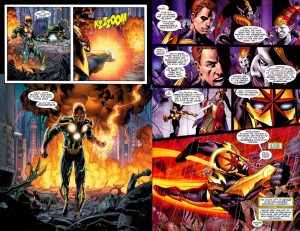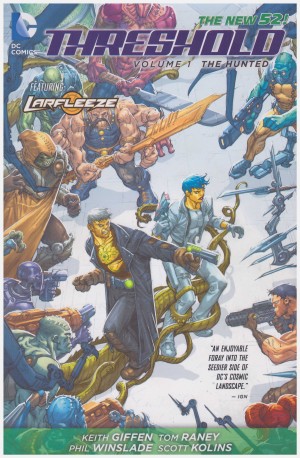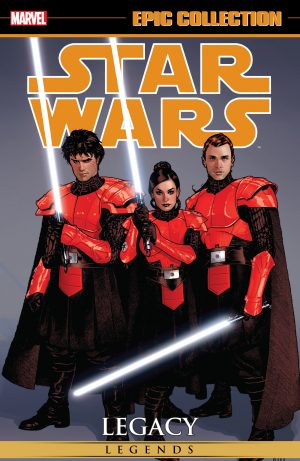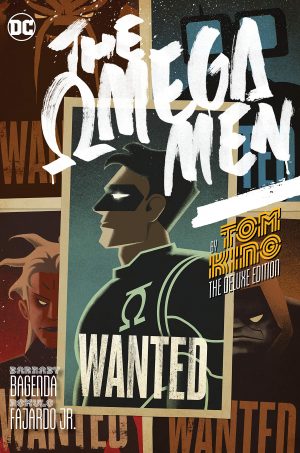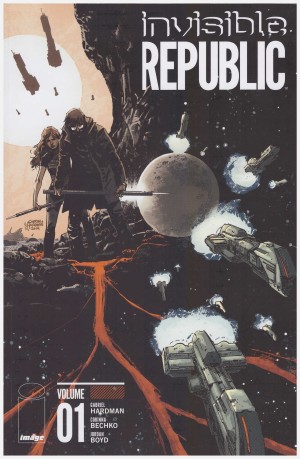Review by Ian Keogh
By the time the writing team of Dan Abnett and Andy Lanning assumed control of his destiny, the Richard Rider version of Nova had already drifted through three series since his 1976 introduction.
Although his powers differed from Green Lantern, the induction of a human into a super powered galactic police force was a similar idea, and other aspects of earlier Nova series had been equally derivative. Abnett and Lanning’s opening story reduces him to the sole armoured police warrior, carrying their home planet’s entire knowledge and power around with him in the form of a computer presence in his helmet known as Worldmind. It’s sets up a bickering relationship, with Worldmind of the opinion Nova’s over-riding duty is to protect it, while Nova wants to help living beings.
Abnett and Lanning decide early that Nova is far more distinctive as a human in space than as one of several hundred superheroes on Earth, although there is a nice two chapter interlude set there accentuating how far his concerns have been removed from those of Earth’s superheroes. Much of this collection is wrapped in and out of two large crossovers ultimately featuring most of Marvel’s prominent characters not based on Earth, Annihilation and Annihilation Conquest, and it might be frustrating to read around the edges of that without any resolution. Some of this material also features in the collections of those stories.
It’s Annihilation Conquest that occupies most of the content. Taking advantage of the devastation to the Kree empire, a techno-organic virus known as the Phalanx is spreading from world to world. It possesses individuals, subsuming them into a hive mind while leaving their essential skills and most personality intact. As Abnett and Lanning formularised the core story, although others wrote parts of it, they have a handle on what Nova’s involvement is, be it direct in places, or indirect. Key to most of this is his attempting to fight off possession. It’s an idea-packed ride with plenty of surprises.
Although Kev Walker illustrates Nova’s re-boot, it’s Sean Chen (sample art left) who picks up the designs for a series, coming up with an impressive visual array depicting the interface between Nova and Worldmind. His art is great, as are the contributions of Wellinton Alves (sample art right) and Paul Pelletier as he has to depict ructions on a techno-organic world. Mahmud A. Asrar, Geraldo Borges and Klebs also shine when contributing far fewer pages. Only Brian Denham lets the side down. His basic art is fine, but his depiction of women fetishistic and exploitative.
Nova’s powers are increased, but as he’s in space speed is difficult to display, and as he’s a point and fire type of guy, it’s not obvious for much of the book. Perhaps realising the problem, the writers complete the collection by setting him against Silver Surfer, about as powerful as it comes at Marvel before hitting God mode. It’s a three chapter story with a very persistent menace attacking during a crisis, twisting very nicely.
Abnett and Lanning redefined a character who had no particular use, giving him purpose and presence. They upped the science fiction concepts, are superb at concealing their surprises, and the result was the longest running Nova series to date. The remainder of their work is collected in Volume Two.

